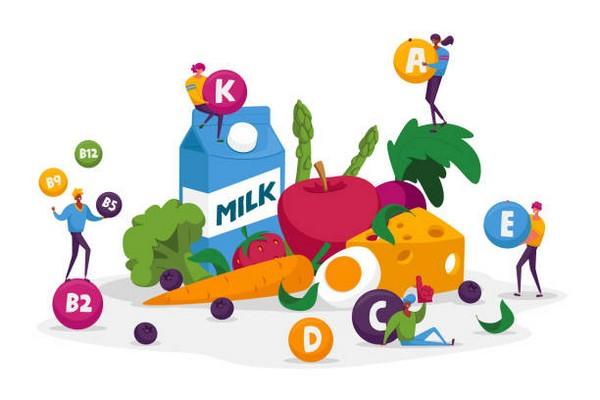When it comes to managing your diet, understanding the sources of calories and how they impact your nutritional goals is crucial. For those looking to consume calories without the accompanying carbs or protein, the primary source is fats. In this article, we will explore various options that provide calories from fats, their benefits, and how to incorporate them into your diet.
Understanding Calories, Carbs, and Protein
Calories are a measure of energy that our body needs to function. They come from three macronutrients: carbohydrates, proteins, and fats. Each macronutrient plays a different role in our body:
Carbohydrates: Provide quick energy and are broken down into glucose.
Proteins: Essential for building and repairing tissues, and supporting immune function.
Fats: Provide long-lasting energy, support cell growth, and protect organs.
While carbs and proteins are essential, there are instances where you might want to consume calories solely from fats.
Why Choose Calories from Fats?
Choosing calories from fats can be beneficial for several reasons:
Ketogenic Diets: High-fat, low-carb diets like the ketogenic diet rely on fats for energy.
Energy Density: Fats are more energy-dense, providing 9 calories per gram compared to 4 calories per gram from carbs or proteins.
Sustained Energy: Fats provide a slow, steady release of energy, helping to keep you fuller for longer.
Types of Fats
Fats can be categorized into different types, each with varying effects on health:
Saturated Fats: Found in animal products and some plant oils. They can raise LDL cholesterol levels.
Unsaturated Fats: Include monounsaturated and polyunsaturated fats, found in avocados, nuts, and fish. These are considered heart-healthy.
Trans Fats: Artificial fats found in processed foods. They are harmful and should be avoided.
Foods That Provide Calories But No Carbs or Protein
Oils
Oils are a pure source of fat and provide significant calories without carbs or protein.
Olive Oil
Benefits: Rich in monounsaturated fats and antioxidants.
Uses: Ideal for salad dressings, cooking, and drizzling over vegetables.
Coconut Oil
Benefits: Contains medium-chain triglycerides (MCTs) which are quickly metabolized for energy.
Uses: Great for baking, cooking, and adding to coffee for an energy boost.
Avocado Oil
Benefits: High in heart-healthy monounsaturated fats and vitamin E.
Uses: Perfect for high-heat cooking, salads, and marinades.
Butter and Ghee
Butter
Benefits: Contains fat-soluble vitamins A, D, E, and K.
Uses: Ideal for cooking, baking, and spreading.
Ghee
Benefits: Clarified butter that is lactose-free and rich in butyrate, which supports gut health.
Uses: Excellent for high-heat cooking and adding flavor to dishes.
Nuts and Seeds (Fats Only)
While most nuts and seeds contain some carbs and protein, focusing on their fat content can help maintain a low-carb, high-fat intake.
Macadamia Nuts
Benefits: High in monounsaturated fats and low in carbs.
Uses: Snack on them raw or add to dishes for a crunchy texture.
Chia Seeds
Benefits: Rich in omega-3 fatty acids and fiber.
Uses: Add to smoothies, yogurt, or make chia pudding.
Flaxseeds
Benefits: High in omega-3 fatty acids and lignans, which may reduce cancer risk.
Uses: Sprinkle on cereals, salads, or incorporate into baking.
Animal Fats
Animal fats are a rich source of calories and primarily consist of saturated and unsaturated fats.
Lard
Benefits: Rendered pork fat that is versatile for cooking.
Uses: Ideal for frying, baking, and adding flavor to dishes.
Duck Fat
Benefits: High in monounsaturated fats and adds a rich flavor.
Uses: Perfect for roasting vegetables and meats.
Tallow
Benefits: Rendered beef or lamb fat that is stable at high temperatures.
Uses: Great for frying, sautéing, and as an ingredient in baked goods.
See Also: What Has A Lot Of Calories To Gain Weight
Health Considerations
Portion Control
While fats are essential, they are calorie-dense. Overconsumption can lead to weight gain. Measure portions carefully to stay within your daily caloric needs.
Quality of Fats
Choose high-quality fats to support health. Opt for unprocessed, natural sources of fats like extra virgin olive oil, organic butter, and nuts.
Balance with Other Nutrients
Even when focusing on fats, it’s important to maintain a balanced diet. Include a variety of foods to ensure you get essential vitamins and minerals.
Incorporating High-Fat Foods into Your Diet
Meal Planning
Breakfast: Add avocado to your eggs or use coconut oil in your coffee.
Lunch: Use olive oil-based dressings on salads.
Dinner: Cook meats and vegetables in butter or ghee.
Snacks: Enjoy a handful of macadamia nuts or a spoonful of chia seeds mixed with yogurt.
Recipes
Avocado and Egg Breakfast
Ingredients: 1 avocado, 2 eggs, olive oil, salt, pepper.
Instructions:
Cut the avocado in half and remove the pit.
Crack an egg into each avocado half.
Drizzle with olive oil, salt, and pepper.
Bake at 350°F for 15-20 minutes.
Coconut Oil Fat Bombs
Ingredients: 1 cup coconut oil, 1/4 cup cocoa powder, sweetener to taste.
Instructions:
Melt coconut oil and mix with cocoa powder and sweetener.
Pour into silicone molds.
Refrigerate until solid.
Conclusion
Choosing calories from fats can be a strategic way to manage energy intake, especially for those following specific diets like ketogenic or low-carb plans. By understanding the different types of fats and incorporating high-quality sources into your meals, you can enjoy the benefits of sustained energy and improved health. Remember to balance your intake with other nutrients and monitor portions to maintain a healthy diet.


